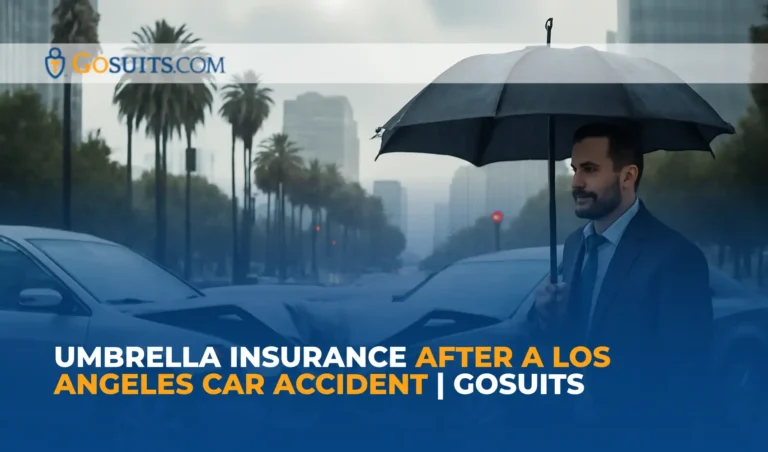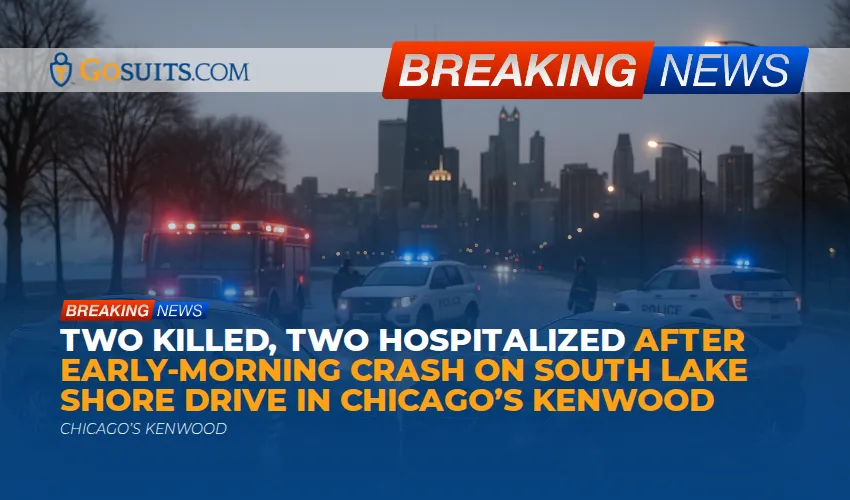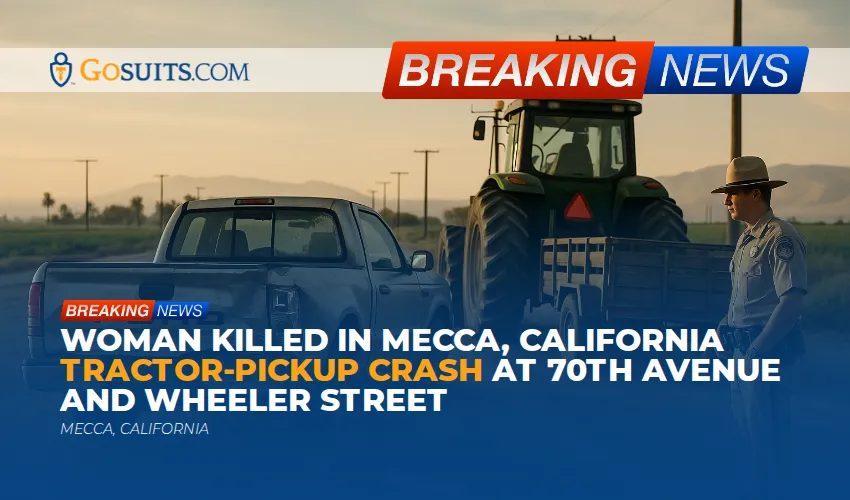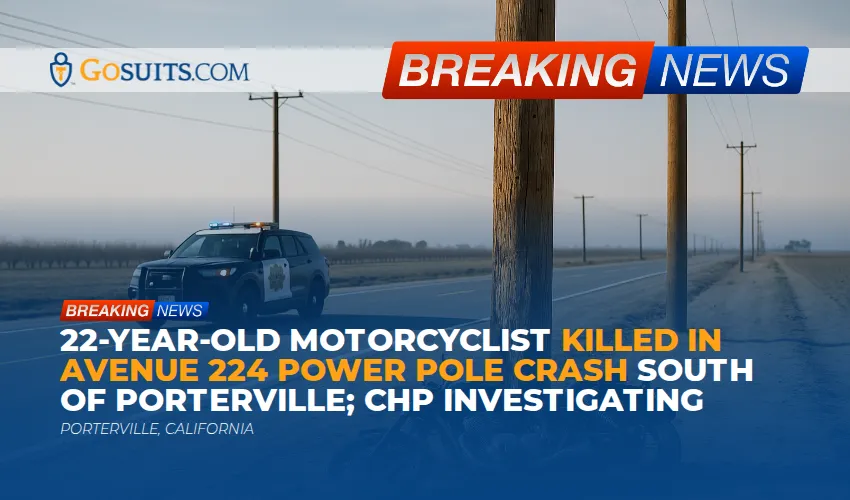- What is an umbrella insurance policy and how does it work after a Los Angeles car accident?
- How common are serious car crashes in Los Angeles and why does umbrella coverage matter?
- When does an umbrella or excess liability policy apply in an LA car accident case?
- How do you find and access the at‑fault driver’s umbrella policy in Los Angeles?
- What is the difference between an umbrella policy and excess liability insurance?
- Does the at‑fault party’s umbrella policy cover your injuries, and what are typical exclusions?
- How do California policy‑limits demands work, and can they include umbrella insurers?
- What are California “bad faith” rules if an insurer refuses a reasonable settlement within limits?
- How do you notify and involve an umbrella or excess insurer in a severe injury claim?
- What happens when multiple people are injured and limits are not enough in Los Angeles?
- What about your own UM/UIM coverage and umbrella UM/UIM after a Los Angeles crash?
- What deadlines and claim‑handling rules apply under California law?
- How do settlements interact with medical liens, Medi‑Cal, or Medicare in an LA case?
- Are punitive damages covered by umbrella or excess insurance in California?
- How do government defendants, rideshare (Uber/Lyft), and commercial policies affect umbrella issues?
- What evidence helps maximize recovery under primary and umbrella policies?
- What defenses do insurers raise in umbrella insurance claims, and how can plaintiffs respond?
- How do these umbrella and UM/UIM rules compare in Texas and Illinois?
- FAQ for defendants in Los Angeles worried about personal exposure beyond auto limits
- How GoSuits helps with umbrella insurance after a Los Angeles car accident
- Sources
What is an umbrella insurance policy and how does it work after a Los Angeles car accident?
A personal umbrella policy is a form of extra liability protection that sits above your “underlying” policies (such as auto or homeowners). If the at‑fault driver’s auto liability limits are exhausted by a severe injury claim or a wrongful death claim, umbrella or excess liability coverage can provide additional limits to pay the remaining damages, up to the umbrella policy limit. In insurance law, this layer is commonly referred to as “excess insurance” because it applies after the primary coverage is used up. See the legal definition of excess insurance at Cornell Law School’s Legal Information Institute.
In a Los Angeles car accident, umbrella coverage can be critical where injuries are life‑altering, long‑term medical care is required, or a family pursues a wrongful death claim. For plaintiffs, understanding how to access the at‑fault driver’s umbrella coverage after a car accident can be the difference between an inadequate settlement and a full civil recovery. For defendants, knowing when your excess carrier must be notified and involved helps protect you from personal exposure beyond your auto policy limits.
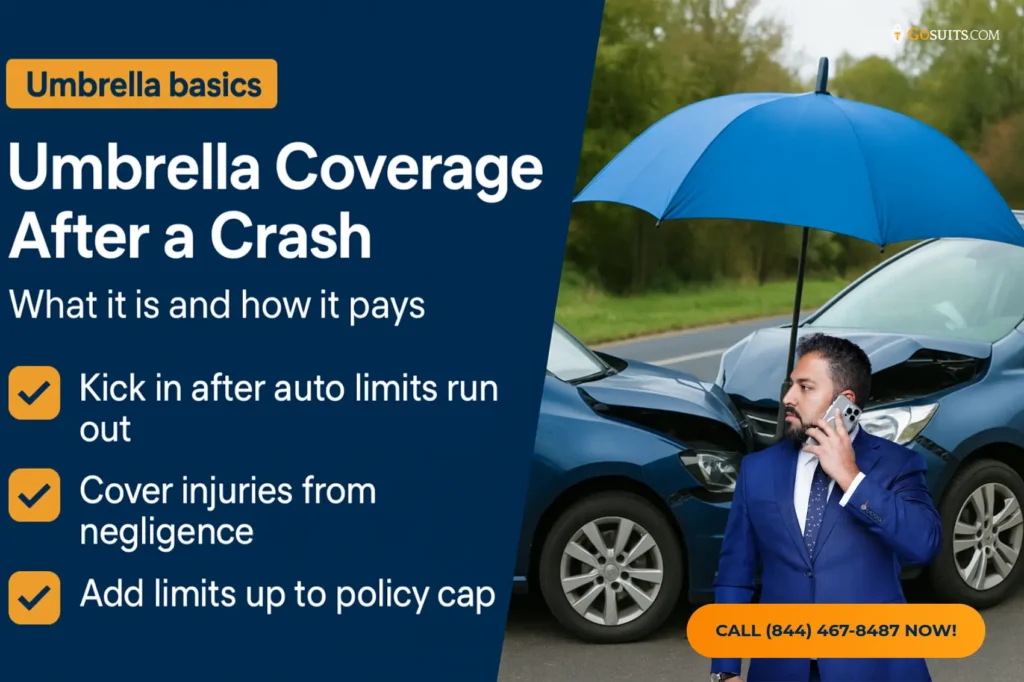
How common are serious car crashes in Los Angeles and why does umbrella coverage matter?
Severe crashes are unfortunately common in California and the Los Angeles area:
- California statewide fatalities: California reported 4,407 traffic fatalities in 2022, per the California Office of Traffic Safety’s Quick Stats (OTS).
- National context: The National Highway Traffic Safety Administration reports tens of thousands of fatalities annually nationwide; see final 2022 data and methodology through NHTSA’s Fatality Analysis Reporting System resources (NHTSA FARS).
Los Angeles County’s large population and dense traffic corridors mean more exposure and a higher risk of large losses. In serious collisions across Los Angeles, Pasadena, Glendale, the San Fernando Valley, Westside, South Bay, Downtown LA, East Los Angeles, Santa Monica, Long Beach, Beverly Hills, Culver City, Inglewood, Hollywood, and Koreatown, the at‑fault driver’s auto policy limits are frequently insufficient. That is exactly when umbrella or excess liability coverage can help make injured people whole.
When does an umbrella or excess liability policy apply in an LA car accident case?
Umbrella insurance typically applies when:
- Underlying auto limits exhaust: The at‑fault driver’s auto liability policy pays up to its per‑person and/or per‑occurrence limits. When those are exhausted by settlement or judgment, the umbrella policy can begin to pay “excess” damages, subject to its terms.
- Covered occurrence and insured: The crash qualifies as a covered “occurrence” and the person liable is an insured under the umbrella policy (for example, a household member or named insured).
- Conditions satisfied: Excess policies often require timely notice, preservation of rights, and sometimes the umbrella insurer’s consent before settlement of the underlying case.
While many umbrella policies are “excess only” and do not provide a defense until the primary policy is exhausted, some policies may “drop down” in narrow circumstances. California courts have noted that excess insurers generally do not have a duty to defend until the underlying policy is used up, absent language to the contrary; see discussion in California appellate decisions addressing excess insurers’ defense obligations, such as Community Redevelopment Agency v. Aetna (Cal. Ct. App. 1996).
How do you find and access the at‑fault driver’s umbrella policy in Los Angeles?
Finding out whether umbrella coverage exists is a crucial early step in a Los Angeles injury claim. Here is how plaintiffs typically proceed:
- Pre‑litigation request: You can request disclosure of the at‑fault driver’s insurance information and policy limits from the claim representative. California does not have a universal statute compelling pre‑suit limits disclosure for auto claims. Some insurers voluntarily disclose. If they refuse, formal discovery generally becomes necessary.
- Formal discovery after filing suit in LA County: Once a civil case is filed, California law allows discovery of the existence and contents of any insurance agreement that may cover the claim. California Code of Civil Procedure section 2017.210 authorizes discovery of insurance agreements under which an insurer may be liable to satisfy a judgment or to indemnify or reimburse for payments made to satisfy the judgment.
- Initial disclosures in federal court (if applicable): If the case is in federal court (for example, diversity jurisdiction), Federal Rule of Civil Procedure 26(a)(1)(A)(iv) requires pretrial disclosure of insurance policies that may cover the judgment.
- Accessing the umbrella carrier directly: After suit is served, defense counsel typically tenders the claim to both the primary and umbrella insurers. Plaintiffs’ counsel may also send notice and a settlement demand directly to the umbrella carrier to put it on notice, especially in severe injury cases where exposure exceeds primary limits.
In short, if an insurer will not voluntarily disclose the umbrella policy, California discovery rules give you a clear path to obtain it in litigation.
What is the difference between an umbrella policy and excess liability insurance?
While many people use “umbrella insurance policy” and “excess liability coverage” interchangeably, there are differences:
- Excess liability insurance: Pure excess policies add extra limits above a specific underlying policy and typically follow form, meaning they adopt the same coverage terms as the underlying policy. See LII on excess insurance.
- Umbrella insurance policy: Often broader than “follow‑form” excess, an umbrella may cover additional risks or provide coverage even when the underlying policy would not, subject to its own terms and exclusions. However, many modern personal umbrella policies function largely as excess auto/home liability coverage.
Either way, after a serious Los Angeles car accident, plaintiffs and defendants both need to evaluate the structure of the at‑fault party’s insurance tower: primary auto liability, any additional liability limits (e.g., an umbrella), and any applicable endorsements.
Does the at‑fault party’s umbrella policy cover your injuries, and what are typical exclusions?
Most personal umbrella policies provide third‑party liability coverage for bodily injury caused by an insured’s negligence in an auto collision. However, exclusions may apply, including:
- Intentional/willful acts: California Insurance Code section 533 bars insurance coverage for an insured’s willful acts. If the conduct is deemed willful, coverage is barred by statute.
- Excluded vehicles or business use: Some umbrellas exclude certain vehicle types, commercial use, or vehicles not listed on the underlying policy.
- Failure to maintain underlying limits: Policies may require specific minimum underlying auto limits; if the insured failed to maintain them, the umbrella may only respond as if those limits existed or may not respond at all until the retained amount is met.
- Family or household exclusions: Certain intra‑household claims may be limited by policy language.
Ultimately, coverage turns on the umbrella policy wording and California insurance law. Disputes sometimes arise over whether an umbrella must “drop down,” or whether a particular exclusion applies. These are litigated issues that depend on policy text and facts.
How do California policy‑limits demands work, and can they include umbrella insurers?
California recognizes time‑limited settlement demands to resolve bodily injury and wrongful death claims. The Legislature codified standards for such demands in Code of Civil Procedure sections 999 through 999.5, effective 2023. A compliant demand generally must:
- Be in writing and identify the claim and parties;
- Offer a full release of the insured from all present claims for a specified sum within available policy limits;
- Remain open for a reasonable period (at least 30 days for claims arising from motor vehicle incidents); and
- Include material terms required by the statute.
A properly crafted “policy limits demand” can and often should be sent to both the primary auto insurer and any known umbrella or excess liability insurer where exposure exceeds the primary limits. Doing so gives all liable carriers the opportunity to settle within their applicable limits and can help protect the insured from personal exposure while positioning the plaintiff’s claim for full recovery.
What are California “bad faith” rules if an insurer refuses a reasonable settlement within limits?
California common law imposes a duty on liability insurers to accept reasonable settlement demands within policy limits when liability is clear and damages are likely to exceed limits. Leading California Supreme Court decisions include:
- Comunale v. Traders & General Ins. Co. The insurer may be liable for the entire resulting judgment if it unreasonably refuses a reasonable within‑limits settlement opportunity (CourtListener).
- Crisci v. Security Ins. Co. of New Haven. Reinforced the insurer’s duty to give at least equal consideration to the insured’s financial interests (CourtListener).
- Johansen v. California State Auto Assn. An insurer acts at its peril by refusing a reasonable offer within limits when liability is clear and the likely judgment will exceed policy limits (CourtListener).
These principles apply to primary insurers and can, in appropriate cases, reach excess/umbrella insurers that have an opportunity to settle within their layer. A well‑prepared policy limits demand under CCP sections 999–999.5 becomes important evidence in any later bad‑faith analysis.
How do you notify and involve an umbrella or excess insurer in a severe injury claim?
In major injury cases in Los Angeles County, both sides should be mindful of excess carrier notice:
- Plaintiffs: If you anticipate damages beyond primary limits, send notice and a detailed settlement demand to the umbrella carrier as soon as you learn of its existence. This helps prevent later disputes about late notice and shows good‑faith efforts to resolve all claims.
- Defendants/insureds: Promptly tender the claim to all potential insurers and cooperate with reasonable requests. Some umbrella policies have strict notice or consent‑to‑settle provisions. Failure to comply can jeopardize coverage.
Involving all insurers early also promotes efficient settlement conferences and mediations in Los Angeles Superior Court, where global settlements often require contribution from multiple layers.
What happens when multiple people are injured and limits are not enough in Los Angeles?
When a crash injures several people, a single per‑occurrence limit can be quickly exhausted. Practical considerations include:
- Global settlement strategy: Plaintiffs’ counsel may coordinate to negotiate a global resolution across all claimants within available policy limits, including any umbrella coverage.
- Interpleader or equitable allocation: If claims exceed available limits, insurers may seek court guidance to allocate proceeds fairly. While California statutes do not prescribe a single formula, insurers must act reasonably and in good faith when distributing limited funds among multiple injured people.
- Umbrella/excess contribution: Promptly engaging the umbrella insurer can prevent unnecessary “race to the courthouse” dynamics and promote equitable outcomes.

What about your own UM/UIM coverage and umbrella UM/UIM after a Los Angeles crash?
Your own policy may include Uninsured Motorist (UM) and Underinsured Motorist (UIM) coverage. In California, UM/UIM is governed by Insurance Code section 11580.2. Key points include:
- Two‑year limit for UM/UIM arbitration: An insured must demand arbitration or file suit within two years of the accident, with limited tolling scenarios specified by statute (see Ins. Code § 11580.2(i)).
- Preserve subrogation rights: Before settling with the at‑fault driver, obtain your UM/UIM insurer’s written consent, as settlements that impair the insurer’s subrogation rights can bar UM/UIM recovery. See Ins. Code § 11580.2(c)(3).
- How UIM works in California: California UIM generally pays the difference between your UIM limits and the at‑fault driver’s liability payment, not a stacked total. See the statutory framework in section 11580.2.
- Umbrella UM/UIM: California does not require UM/UIM on umbrella policies. Some carriers offer it by endorsement. If you have an umbrella with UM/UIM, it can add meaningful protection in catastrophic crashes with underinsured drivers in LA.
Understanding your UM/UIM rights and deadlines is essential, especially in hit‑and‑run cases, multi‑car collisions, or where the at‑fault driver’s policy limits are low relative to your losses.
What deadlines and claim‑handling rules apply under California law?
Several California rules and deadlines may affect your umbrella insurance claim after a Los Angeles collision:
- Personal injury and wrongful death statute of limitations: Generally two years from the date of injury or death. See Code of Civil Procedure section 335.1.
- Government defendants (public entities): A government claim must typically be filed within six months under the Government Claims Act. See Government Code section 911.2. Special timelines then apply to file suit if the claim is rejected.
- California claim‑handling rules: The Department of Insurance’s Fair Claims Settlement Practices Regulations require insurers to accept or deny claims within specific timeframes after receiving a proof of claim and to provide regular updates. See Title 10 of the California Code of Regulations section 2695.7 as published by the Department of Insurance (CDI FCSPR).
- Comparative fault: California follows pure comparative negligence, reducing damages by a claimant’s percentage of fault. See Li v. Yellow Cab Co., 13 Cal.3d 804 (1975).
- Time‑limited demands (effective 2023): Requirements for valid policy‑limits demands are codified at CCP sections 999–999.5 (§ 999).
These timelines can be outcome‑determinative. In severe injury and wrongful death matters, timely action protects access to all available insurance, including umbrella coverage.
How do settlements interact with medical liens, Medi‑Cal, or Medicare in an LA case?
Resolving liens correctly prevents post‑settlement surprises:
- Medicare (MSP): Medicare has reimbursement rights for conditional payments and requires compliance with the Medicare Secondary Payer statute. See the Centers for Medicare & Medicaid Services’ guidance on MSP (CMS MSP).
- Medi‑Cal: California law grants the Department of Health Care Services recovery rights from third‑party settlements. See Welfare & Institutions Code section 14124.72.
- Hospital liens: California Civil Code sections 3045.1–3045.6 allow hospitals to assert liens against third‑party recoveries (§ 3045.1).
Thorough lien resolution protects the net recovery for injured clients and avoids jeopardizing future benefits. Insurers will often require lien assurances before funding a settlement, especially in large umbrella insurance settlements.
Are punitive damages covered by umbrella or excess insurance in California?
California public policy limits insurance for willful acts. Insurance Code section 533 precludes coverage for an insured’s willful misconduct. Punitive damages under Civil Code section 3294 are meant to punish and deter. Many policies exclude punitive damages, and even where a policy is silent, California courts have significant restrictions on insuring punitive awards tied to the insured’s own wrongdoing. The specifics depend on policy language and the nature of the conduct alleged.
How do government defendants, rideshare (Uber/Lyft), and commercial policies affect umbrella issues?
Different defendants change the insurance landscape:
- Public entities: Government Code claim prerequisites apply (Gov. Code § 911.2). Some public entities have self‑insured retentions and excess layers instead of standard primary policies, affecting tender and excess involvement.
- Rideshare (TNC) incidents: Transportation Network Companies must carry specified liability limits during different app periods under California Public Utilities Code section 5433. These claims often implicate layered insurance, including corporate excess coverage.
- Commercial vehicles: Trucking, delivery, and fleet vehicles typically have higher primary limits and corporate umbrella policies. Early preservation of evidence and notice to all layers is crucial.
What evidence helps maximize recovery under primary and umbrella policies?
To support an umbrella insurance claim in Los Angeles, build a comprehensive record:
- Liability evidence: Traffic Collision Reports, scene photos, video, EDR (“black box”) data, eyewitnesses, and, if needed, accident reconstruction.
- Damages proof: Immediate and ongoing medical records, specialist evaluations, life‑care plans, vocational analyses, and economic loss calculations.
- Policy documentation: Certified copies of the primary and umbrella policies, declarations pages, endorsements, and all reservation‑of‑rights letters.
- Claim communications: Written settlement offers, time‑limited policy limits demands (complying with CCP §§ 999–999.5), and insurer responses.
- Comparative fault and defenses: Evidence addressing alcohol/drug testing, speed, distraction, roadway conditions, and vehicle defects, to minimize reductions under California’s comparative negligence rules (Li v. Yellow Cab).
Thorough documentation helps persuade adjusters, mediators, judges, and jurors, and it sets up a strong record for any potential bad‑faith issues.
What defenses do insurers raise in umbrella insurance claims, and how can plaintiffs respond?
Common insurer arguments and practical responses include:
- Coverage defenses: Insurers may invoke exclusions (e.g., willful acts, business use, vehicle exclusions). Response: Analyze policy language, endorsements, and California Insurance Code section 533. Address facts and negligent conduct evidence to maintain coverage.
- Late notice or consent: Umbrella carriers may claim prejudice due to delayed notice or settlements without consent. Response: Show prompt notice upon discovery of coverage, document efforts to involve all carriers, and demonstrate lack of prejudice.
- Damages disputes: Insurers may challenge medical causation or future care costs. Response: Use treating physicians, independent specialists, and life‑care/economic experts. Tie proof to California jury instructions and objective medical findings.
- Comparative fault: Insurers may argue your share of fault. Response: Rebut with scene evidence, reconstruction, and applicable California Vehicle Code rules.
- Reasonableness of demand: On bad‑faith theories, an insurer may claim your policy limits demand was defective. Response: Follow CCP §§ 999–999.5 strictly, include all material terms, and keep the demand open for the statutory period.
How do these umbrella and UM/UIM rules compare in Texas and Illinois?
While this page focuses on California and Los Angeles courts, multi‑state claims sometimes involve out‑of‑state policies or defendants. A few high‑level contrasts:
- Discovery of insurance: Like California’s CCP § 2017.210, Federal Rule of Civil Procedure 26(a)(1)(A)(iv) requires disclosure of insurance in federal cases. Texas and Illinois civil procedure also allow discovery of insurance agreements in litigation.
- UM/UIM differences: States differ on how UIM offsets and procedures work. California’s Ins. Code § 11580.2 governs UM/UIM, including two‑year arbitration demands and consent‑to‑settle requirements. Other states have varying timetables and offsets. Always check the policy and applicable state statute if an out‑of‑state policy is involved in a Southern California crash.
- Excess/umbrella principles: Across jurisdictions, umbrella and excess policies generally sit above primary coverage and follow their own terms. The details of defense obligations and drop‑down triggers vary with policy text and state case law.
When a crash in Los Angeles involves a driver insured in Texas or Illinois, or a corporate policy domiciled elsewhere, conflict‑of‑laws questions can arise. Coordinated strategy is important to preserve access to all layers of coverage.

How GoSuits helps with umbrella insurance after a Los Angeles car accident
Serious collisions in Los Angeles often require navigating multiple insurance layers: primary auto liability, a personal umbrella policy, potential corporate excess policies, and your own UM/UIM. Coordinating all of that is demanding when you are coping with treatment, lost income, and family responsibilities. A free consultation can clarify coverage, deadlines, and next steps, and it can start the process of preserving evidence and tendering claims to every responsible insurer.
At GoSuits, we focus on high‑quality representation rather than volume. Here is how we add value in umbrella insurance claims after LA car accidents:
- Availability and communication: We are available 24/7 for immediate free consultations. We provide multilingual support, including round‑the‑clock Spanish and Farsi speakers, so you can ask questions and get updates whenever you need. You will hear directly from our attorneys and dedicated case team, and you will have timely status reports at each milestone.
- No win, No Attorney Fees and cost transparency: Our fee structure is straightforward. If we do not obtain a recovery, you pay no attorney fees. Learn more here: No win, No Attorney Fees. There are no hidden administrative fees. We discuss costs and potential case expenses at the beginning, in writing.
- Tools and workflow designed for speed and thoroughness: We use a proprietary personal injury software platform built for our firm to move each case faster from investigation through demand, negotiation, filing suit, discovery, and trial preparation. We are a law firm that invests in forward‑looking tools to help level the playing field against insurers. That means earlier policy discovery, sharper damages modeling, and tighter compliance with California’s time‑limited demand statutes to position your case for the best possible outcome.
- Experience and track record: Our team has 30 years of combined experience and has litigated more than 1,000 cases, with settlements and verdicts published on our website (past cases). In complex matters, such as 18‑wheeler collisions, product failures, brain and spinal injuries, we hire qualified experts across California, Texas, and Illinois to establish liability and damages. Recognition includes:
- #1 settlements and verdicts across multiple U.S. counties according to TopVerdict.
- Top 100 Settlement in Texas.
- Sean Chalaki named Top 40 Under 40 by National Trial Lawyers.
- Recognized by Best Lawyers in 2023, 2024, and 2025.
- Selected to Super Lawyers since 2021.
- What makes us different in umbrella insurance cases:
- Comprehensive coverage mapping: We identify all policies that may respond (primary, umbrella, commercial, rideshare, homeowner’s, landlord’s, and your own UM/UIM) then send immediate tenders and demands to keep every carrier engaged.
- Data‑driven policy limits demands: We prepare California‑compliant time‑limited demands under CCP §§ 999–999.5, supported by objective medical evidence, economic loss calculations, and liability proof tailored for LA adjusters and defense counsel.
- Bad‑faith readiness: If an insurer unreasonably refuses a fair settlement within limits, we preserve the record to protect you under California’s bad‑faith precedents.
- Lien and net‑recovery focus: From day one, we plan for Medicare, Medi‑Cal, ERISA, VA, and hospital liens to maximize your net result.
- Local presence and immediate help across Los Angeles: We serve clients throughout Los Angeles County and Southern California, including the San Fernando Valley, Westside, South Bay, Downtown LA, East Los Angeles, Pasadena, Glendale, Burbank, Santa Monica, Long Beach, Beverly Hills, Culver City, Inglewood, Hollywood, and Koreatown. Our attorneys and staff are available 24/7 at all our locations so we can begin evidence preservation, policy discovery, and medical coordination immediately.
- Community involvement: We are active in local schools, chambers of commerce, and non‑profit foundations, and we participate on boards and in trial lawyer organizations such as the Texas Trial Lawyers Association and consumer protection groups. Community ties keep us grounded in the needs of LA families.
If you or a loved one was injured in an LA crash and believe damages will exceed the at‑fault driver’s auto limits, we can start the process now by documenting losses, notifying every relevant insurer, and preparing a clear, California‑compliant settlement roadmap for both the primary and umbrella carriers.
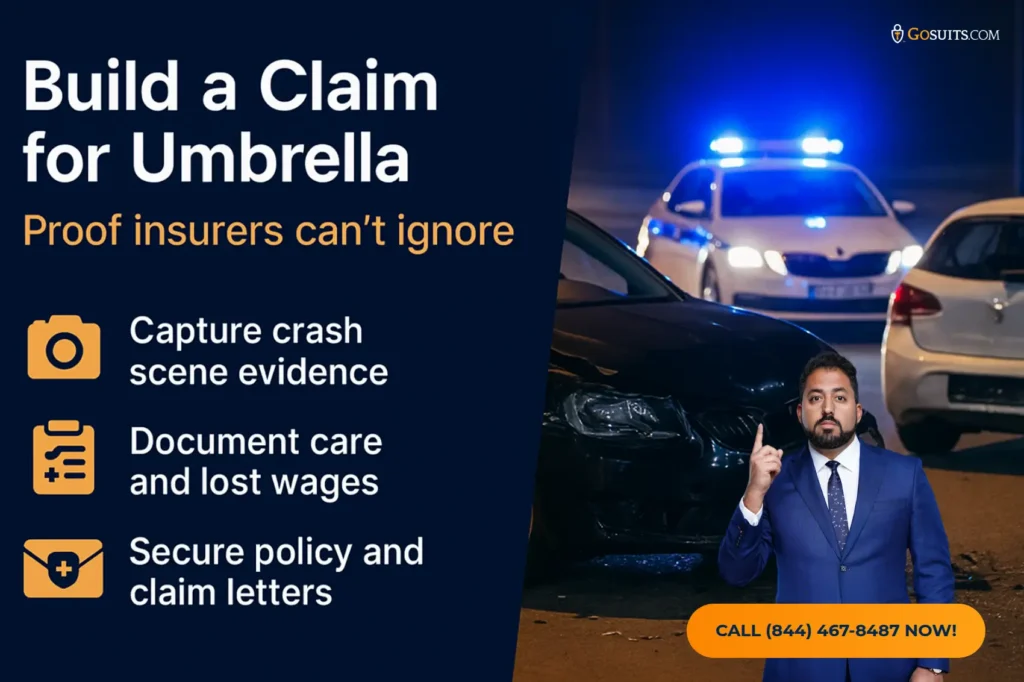
Sources
- Definition and concepts of excess insurance: Cornell Law School Legal Information Institute (Wex) – Excess insurance.
- California UM/UIM statute and deadlines: Cal. Ins. Code § 11580.2.
- California discovery of insurance policies: CCP § 2017.210.
- Time‑limited demands statute: CCP § 999 et seq.
- California claim‑handling regulations: California Department of Insurance – Fair Claims Settlement Practices Regulations (Title 10, § 2695.7).
- Comparative negligence in California: Li v. Yellow Cab Co., 13 Cal.3d 804 (1975).
- California bad‑faith duty to accept reasonable settlement:
- Comunale v. Traders & General Ins. Co., 50 Cal.2d 654 (1958).
- Crisci v. Security Ins. Co. of New Haven, 66 Cal.2d 425 (1967).
- Johansen v. CSAA, 15 Cal.3d 9 (1975).
- Excess insurer defense obligations: Community Redevelopment Agency v. Aetna, 50 Cal. App. 4th 329 (1996).
- California statute of limitations for personal injury/wrongful death: CCP § 335.1.
- California Government Claims Act deadline: Gov. Code § 911.2.
- Insurance for willful acts barred: Cal. Ins. Code § 533.
- Medi‑Cal lien rights: Welf. & Inst. Code § 14124.72.
- Hospital lien statute: Civ. Code § 3045.1.
- Medicare Secondary Payer obligations: CMS – Medicare Secondary Payer.
- Rideshare insurance requirements: Pub. Util. Code § 5433.
- Traffic safety statistics:
- California OTS – Quick Stats (statewide fatality data).
- NHTSA – FARS (national crash fatality data).
- Federal insurance disclosure in litigation: FRCP 26(a)(1)(A)(iv).
FAQs
If you caused a crash and are concerned about an umbrella insurance claim in LA:
- Should I notify my umbrella carrier? Yes, provide prompt written notice to all carriers listed on your declarations pages and any umbrella insurer. Timely notice is often a condition of coverage.
- What if the demand exceeds my auto limits? Demands that exceed primary limits should be forwarded to both the primary and umbrella carriers. Insurers have duties to reasonably settle within available limits when liability and damages warrant it.
- What if I get a time‑limited demand? Forward it immediately to your adjuster(s) and defense counsel. California statutes at CCP §§ 999–999.5 establish standards and timelines for responding to such demands.
- Can I be personally liable? If a verdict exceeds your combined primary and umbrella limits, you could face personal exposure. That is why it is important your insurers seriously consider reasonable settlement opportunities within limits.
- Can I talk to the injured party? Communicate through your insurer and counsel to avoid statements that might affect liability or coverage.
